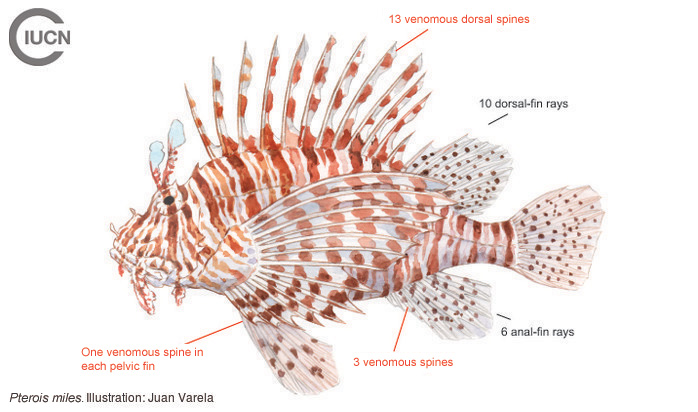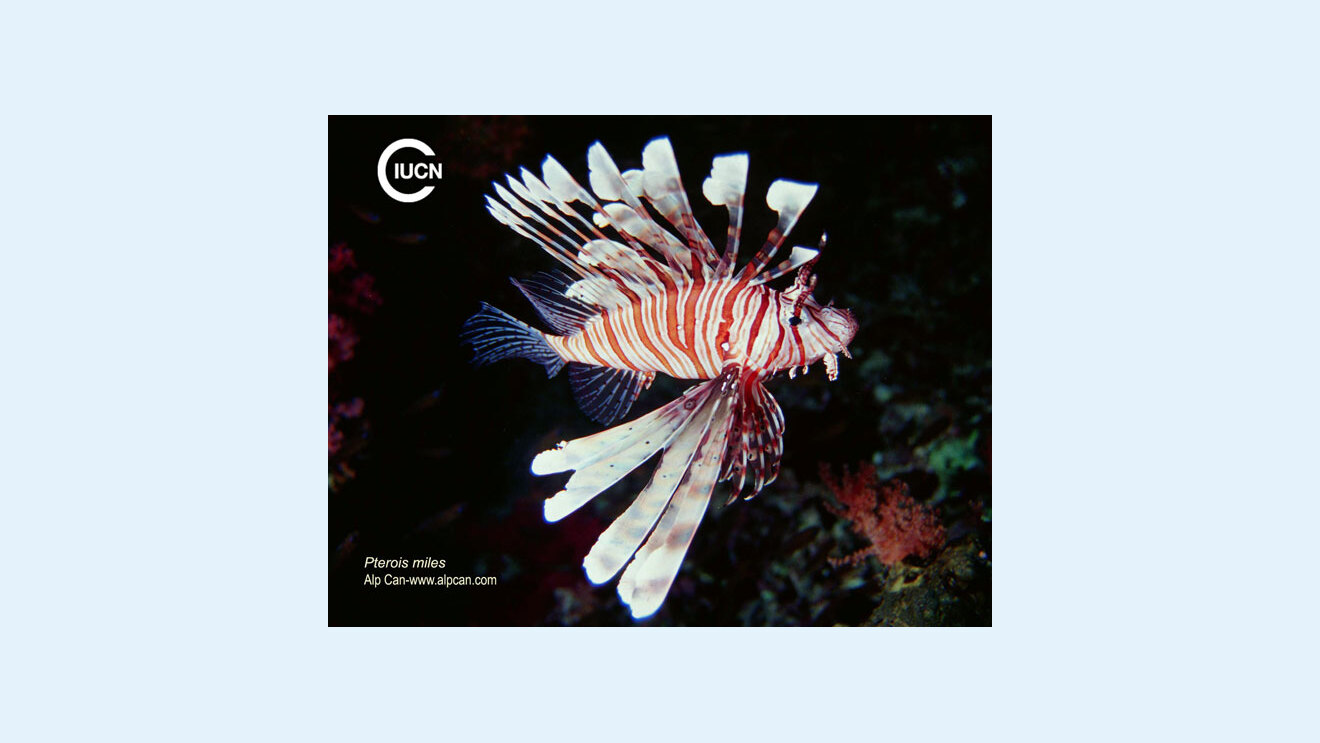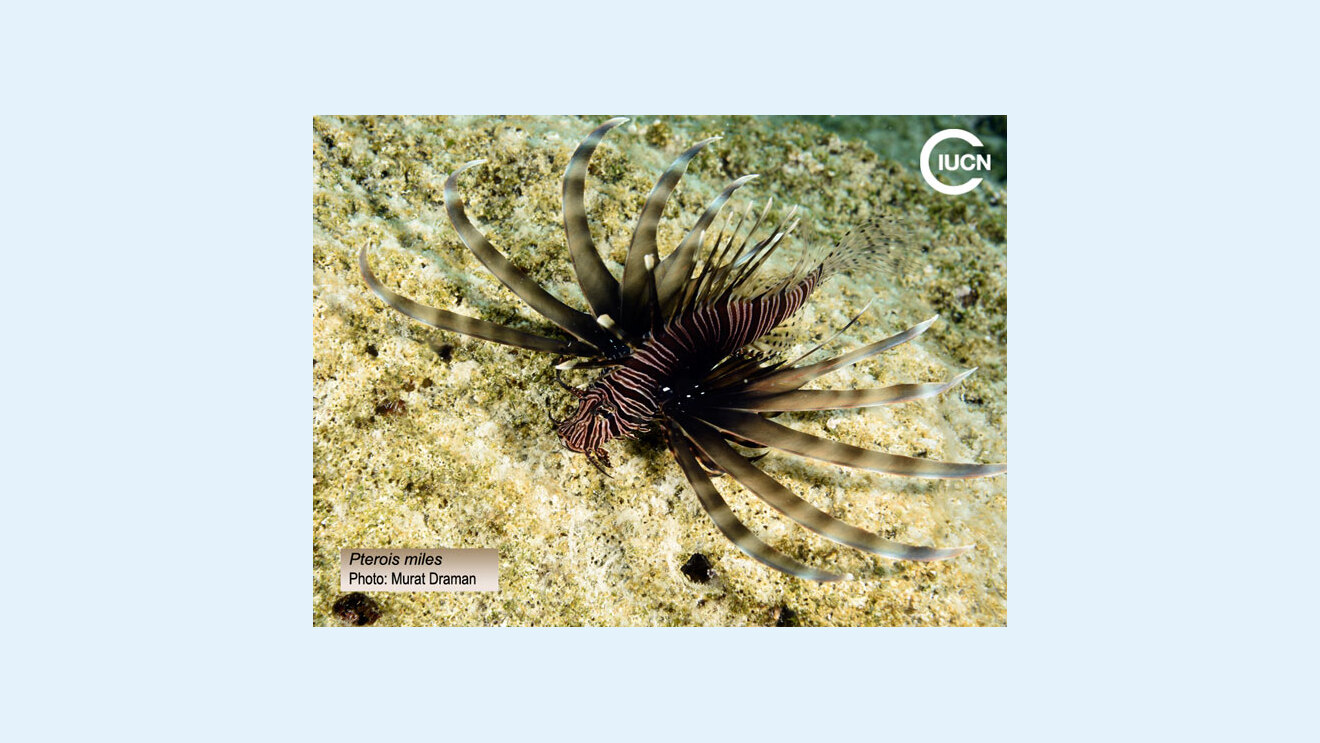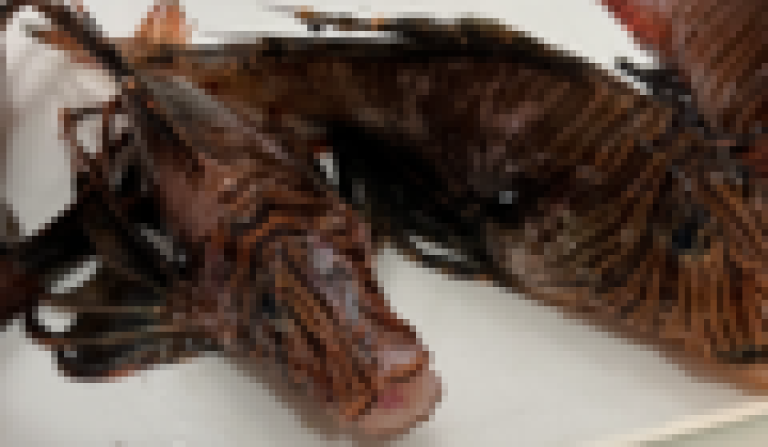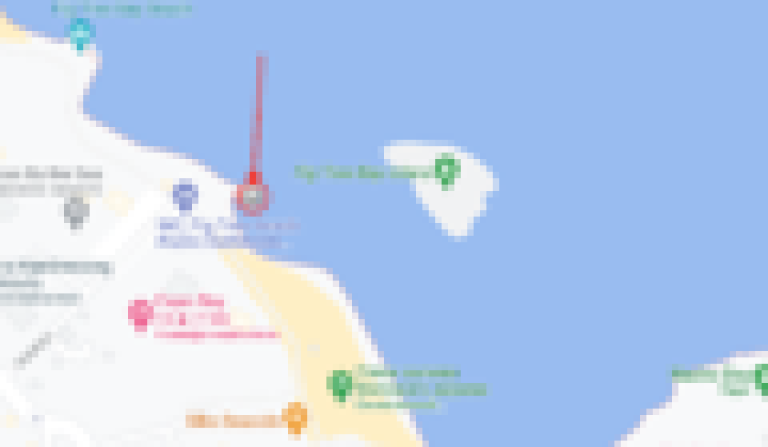Pterois miles
Information
Lionfish are conspicuous and easy to spot in nature. They can tolerate a wide range of temperatures, salinities and depths. In the Mediterranean, it has been found at depths from 0 m to 80 m (some sources refer to a greater depth), associated to both natural and artificial substrata: wave breakers, shipwrecks (metallic, wooden), boulders, seagrass, coralligenous and rocky substrata, sand, mangrove and rocky crevices. They are thought to be nocturnal hunters retreating to ledges and crevices among the rocks and other structures, but they have been found moving about during the day, both alone and in small groups. They have high fidelity to a location, that is, once they find suitable habitat as an adult they tend to stay there.
It has been observed in other seas (native range and invaded areas) that this lionfish can reach maturity in less than a year and spawn several times a year. Females release gelatinous egg masses of up to 30,000 eggs that float and can drift at sea for almost a month.
There is no similar native species in the Mediterranean. Its closest relative also highly invasive, P. volitans (redlionfish), has not been recorded until now in the Mediterranean Sea. Both species are almost indistinguishable morphologically, except for the number of dorsal fins spines or rays (10 rays in P. miles and 11 in P. volitans ), the number of anal fins spines (6 rays in P. miles and 7 in P. volitans ) and the pectoral fin length that reach the middle of the anal fin base in P. miles. Among the other species of lionfish, P. miles also resembles P. radiata , another native fish from the Red Sea. The latter can be distinguishes by the two horizontal white stripes at the base of the tail fin and the lack of marks in its pectoral fins.
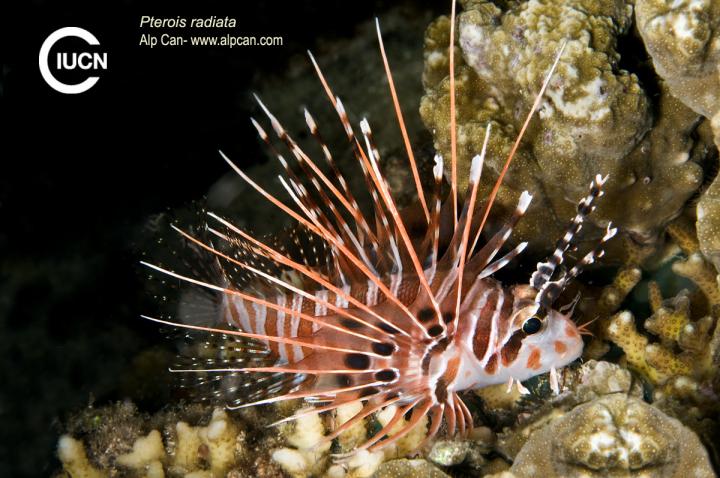
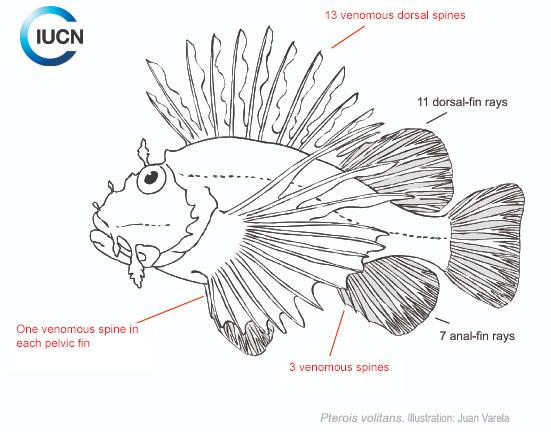

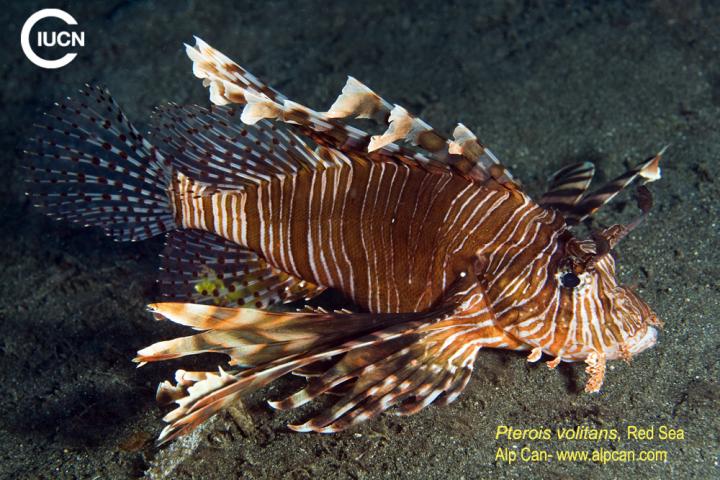
The first Mediterranean specimen of lionfish was collected from Haifa Bay, Israel in 1991. Twenty years later, the species has being recorded in the northern part of Lebanon (2012), off Cyprus (2013), Iskenderun Bay (Kaleköy, 2014) and recently in Kas-Kekova MPA of Turkey.There are reports also from Tunisia, Sicily and Greece. Outside the Mediterranean, there has being a progressive and spectacular invasion along the eastern coasts of the United States, the Caribbean and Gulf of Mexico. Considering these observations and that this lionfish is a common fish in the Red Sea, it has been suggested that the Suez Canal is the most likely pathway for the introduction of the species into the Mediterranean. Recently, genetic studies have confirmed this observation (Bariche et al., 2017).
Pterois miles is an active ambush predator that often use their pectoral fins to corner prey. Juveniles eat mostly invertebrates but shift to a more fish- dominated diet as they grow. The large detrimental effects of the invasion of lionfishes (both P. miles and P. volitans ) on the diversity and function of native communities have been well documented in America and the Caribbean. Because lionfish are highly piscivorous, they may have the capacity to reduce the recruitment of juvenile fishes and may out-compete native predators such as snappers or groupers. In tropical areas where it has invaded, it has also demonstrated to increase algae growth as it reduces the population of grazing fishes.
From the invasive impacts elsewhere, lionfish can impact the economy by reducing populations of grouper and other commercially valuable species, and therefore may damage the economies of coastal communities dependent upon fishing. Lionfish may also impact local diving tourism as they are highly venomous. Nonetheless, lionfish is eaten in some areas of its native and invasive range like in the Caribbean and the US. It is most commonly known as a valuable aquarium fish.
Ali, M., Alkusairy, H., Saad, A., Reynaud, C., Capapé, C. (2016). First record of Pterois miles (Osteichthyes: Scorpaenidae) in Syrian marine waters: confirmation of its accordance in the eastern Mediterranean. Tishreen University Journal for Research and Scientific Studies 38(4):307–313.
Ayas, D., Ağilkaya, G.Ş., Yağlioğlu, D. (2018). New record of the red lionfish, Pterois volitans (Linnaeus, 1758), in the Northeastern Mediterranean Sea. Düzce University Journal of Science & Technology 6:871–877.
Azzurro, E., Bariche, M., Livorno, S., El-solh, R. (2017). Local knowledge and awareness on the incipient lionfish invasion in the eastern Mediterranean Sea. Marine and Freshwater Research 1–3.
Azzurro, E., Stancanelli, B., Di Martino, V. and Bariche, M. (2017). Range expansion of the common lionfish Pterois miles (Bennett, 1828) in the Mediterranean Sea: an unwanted new guest for Italian waters. BioInvasions Records 6(2):95–98. doi: https://doi.org/10.3391/bir.2017.6.2.01.
Bariche, M., Kleitou, P., Kalogirou, S., Bernardi, G. (2017). Genetics reveal the identity and origin of the lionfish invasion in the Mediterranean Sea. Scientific Reports 7(1):1–6. doi: https://doi.org/10.1038/s41598-017-07326-1.
Bariche, M., Torres, M., Azzurro, E. (2013). The presence of the invasive Lionfish Pterois miles in the Mediterranean Sea. Mediterranean Marine Science 14(2):292–294. doi: https://doi.org/10.12681/mms.428.
Dailianis, T., Akyol, O., Babali, N., Bariche, M., Crochetta, F., Gerovasileiou, V., et al. (2016). New Mediterranean Biodiversity Records (July 2016). Mediterranean Marine Science 17(4):608–626.
Green, S.J., Akins, J.L., Maljković, A., Côté, I.M., 2012. Invasive Lionfish drive Atlantic coral reef fish declines. PLoS ONE, 7(3), e32596.Giovos, I., Kleitou, P., Paravas, V. and Marmara, D. (2018). Citizen scientists monitoring the establishment and expansion of Pterois miles ( Bennett , 1828 ) in the Aegean Sea , Greece. Cahiers de Biologie Marine 59:359–365. doi: https://doi.org/10.21411/CBM.A.8DFA67CE.
Gurlek, M., Erguden, D., Uyan, A., Dogdu, S., Yaglıoglu, D., Ozturk, B. and Turan, C. (2016). First record of red lionfish, Pterois volitans (Linnaeus, 1785) in the Mediterranean Sea. Natural and Engineering Sciences 1(3):27–32.
Jiménez, C., Patsalou, P., Andreou, V., Huseyinoglu, M.F., Çiçek, B.A., Hadjioannou, L. and Petrou, A. (2019). Out of sight, out of reach out of mind: Invasive lionfish Pterois miles in Cyprus at depths beyond recreational diving limits. 1st Mediterranean Symposium on the Non-Indigenous Species. pp. 59–64.
Jimenez, C., Petrou, A., Andreou, V., Hadjioannou, L., Wolf, W., Koutsoloukas, N. and Alhaija, R.A. (2016). Veni, vidi, vici: the successful establishment of the lionfish pterois miles in Cyprus (Levantine Sea). Rapid Communications int. Mer Méditerranea 41:417.
Johnston, M.W., Purkis, S.J. (2014). Are lionfish set for a Mediterranean invasion? Modelling explains why this is unlikely to occur. Marine Pollution Bulletin 88(1–2):138–147. doi: https://doi.org/10.1016/j.marpolbul.2014.09.013.
Kleitou, P., Savva, I., Kletou, D., Hall-Spencer, J.M., Antoniou, C., Christodoulides, Y.,et al. (2019). Invasive lionfish in the Mediterranean: Low public awareness yet high stakeholder concerns. Marine Policy 104(September 2018):66–74. doi: https://doi.org/10.1016/j.marpol.2019.02.052.
Kletou, D., Hall-Spencer, J.M. and Kleitou, P. (2016). A lionfish (Pterois miles) invasion has begun in the Mediterranean Sea. Marine Biodiversity Records 9(1):1–7. doi: https://doi.org/10.1186/s41200-016-0065-y.
Oray, I.K., Sinay, E., Saadet Karakulak, F., Yildiz, T. (2015). An expected marine alien fish caught at the coast of Northern Cyprus: Pterois miles (Bennett, 1828). Journal of Applied Ichthyology 31(4):733–735. doi: https://doi.org/10.1111/jai.12857.
Özbek, E.Ö., Mavruk, S., Saygu, İ., Öztürk, B. (2017). Lionfish distribution in the eastern Mediterranean coast of Turkey. Journal of Black Sea/Mediterranean Environment 23(1):1–16.
Peristeraki P., Lazarakis G., Skarvelis C., Georgiadis M., Tserpes G., 2006. Additional records on the occurrence of alien fish species in the eastern Mediterranean Sea. Mediterranean Marine Science, 7 (1), 61-66.
Souza, D.K. De, Owusu, I.O., Otchere, J., Adimazoya, M., Frempong, K., Stephen, C., et al. (2017). Westward Extension of the Lionfish Pterois volitans Linnaeus, 1758 along the Mediterranean Coast of Turkey. Natural and Engineering Sciences 2(2):67–72. doi: https://doi.org/10.11604/pamj.2017.27.65.11004.
Stern, N., Jimenez, C., Huseyinoglu, M.F., Andreou, V., Petrou, A., Öztürk, B., et al. (2018). Constructing the genetic population demography of the invasive lionfish Pterois miles in the Levant Basin , Eastern Mediterranean. Mitochondrial DNA Part A:1–7. doi: https://doi.org/10.1080/24701394.2018.1482284.
Turan, C., Ergüden, D., Gürlek, M., Yağlıoğlu, D., Uyan, A., Uygur, N. (2014). First record of the Indo-Pacific lionfish Pterois miles (Bennett, 1828) (Osteichthyes: Scorpaenidae) for the Turkish marine waters. J. Black Sea/Mediterranean Environment 20(2):158–163.
Turan, C., Öztürk, B. (2015). First record of the lionfish Pterois miles (Bennett 1828) from the Aegean Sea. Journal of the Black Sea/Mediterranean Environment 21(3):334–338.
Turan, C., Uygur, N., İğde, M. (2017). Lionfishes Pterois miles and Pterois volitans in the North-eastern Mediterranean Sea: Distribution, Habitation, Predation and Predators. NESciences 2(1):35–43. doi: https://doi.org/10.1242/jeb.157289.
Invasive lionfish webportal http://lionfish.gcfi.org/
